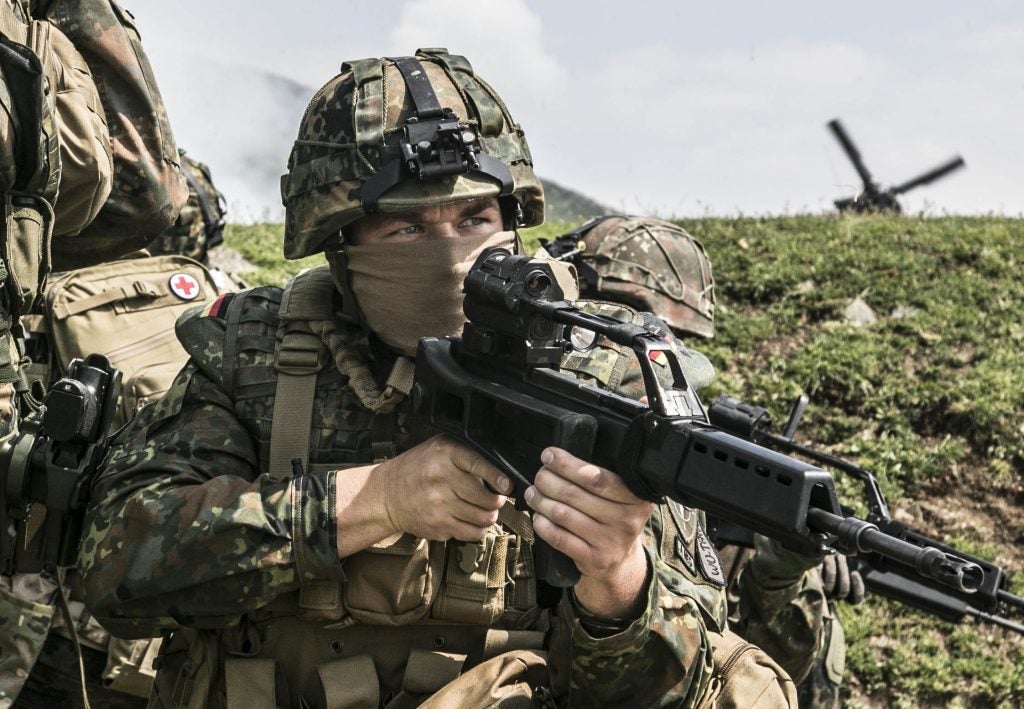Bundeswehr Body Armor and Soldier Systems: Past, Present, and Future
The Bundeswehr’s search for a next-generation body armor system to replace almost all varieties in service is finally coming to an end. On 27 April, 2021, Soldat und Technik reported that 16,000 sets of the new MOBAST body armor system would be delivered to the Bundeswehr by 2021. These deliveries mark the end of a lengthy procurement process that began around 2017.
Historically, the Bundeswehr has had difficulties procuring a service-wide modern set of body armor and load bearing system. From reunification in 1991 to the current day, more than five varieties of general-purpose body armor from two parallel lines of development were issued. However, all of these failed to become a true-standard, with private and unit purchase gear being widespread and mixing of gear being commonplace.
This can cause many logistical and even tactical issues. Armor has limited shelf life, and a multitude of vests in service means the Bundeswehr needs to procure many different types shapes and sizes of armor for vests issued to personnel. Also, different vests have different release mechanisms. A German army medic indicated that during training, the proliferation of different vest types, some without quick releases, made removing vests from simulated casualties difficult.
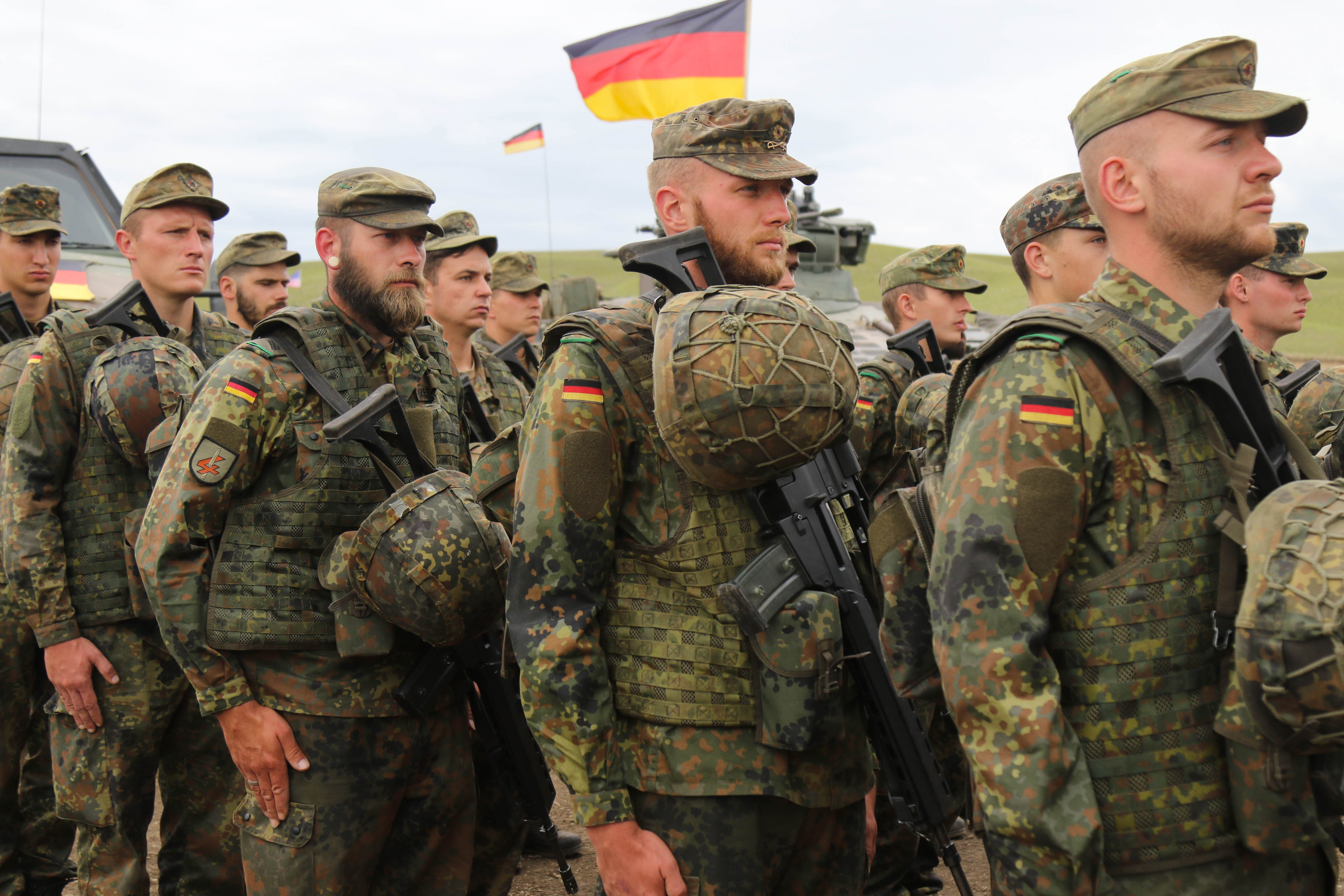
To understand how the new MOBAST system aims to replace all previous generations of body armor and load bearing equipment, it’s worth looking into the history of Bundeswehr body armor and load bearing equipment (LBE).
The first true LBE system adopted by the Bundeswehr of unified Germany was the Koppeltragesystem (KTS) 95, alternately known as Lochkoppel, or simply Koppel. A basic belt-line kit, KTS 95 uses the series of holes mounted on the belt and harness to mount pouches. However, the system lacks the carrying capacity and specialized pouches for modern gear, and is reputedly uncomfortable to wear over long periods. KTS 95 is still the standard issue LBE in the Bundeswehr despite these issues, and the Bundeswehr opened a tender for 125,000 additional sets of KTS 95 in 2015, suggesting that it will remain in service for years to come.
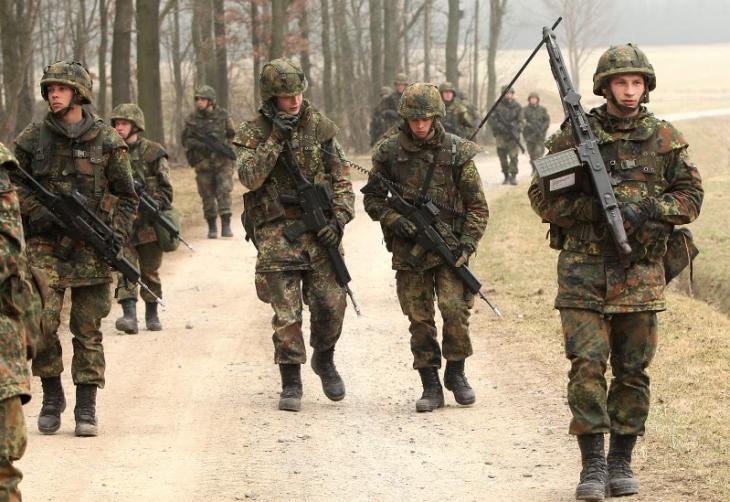
At the time of adoption, the KTS 95 was paired with the earlier (adopted 1987) Splitterschutzweste, or SpliSchu, a light kevlar vest aimed solely at protecting the soldier from shrapnel from artillery fire. The combination of KTS 95 and SpliSchu was the standard-issue kit for frontline Bundeswehr troops up until around the turn of the millenium. SpliSchu vests are still seen sometimes on exercise, but they are often paired with newer private or unit purchased load bearing equipment such as Tasmanian Tiger or LHT Chest Rigs. SpliSchus have also turned up in other combat zones as the Bundeswehr surplusses them as it phases them out of service.
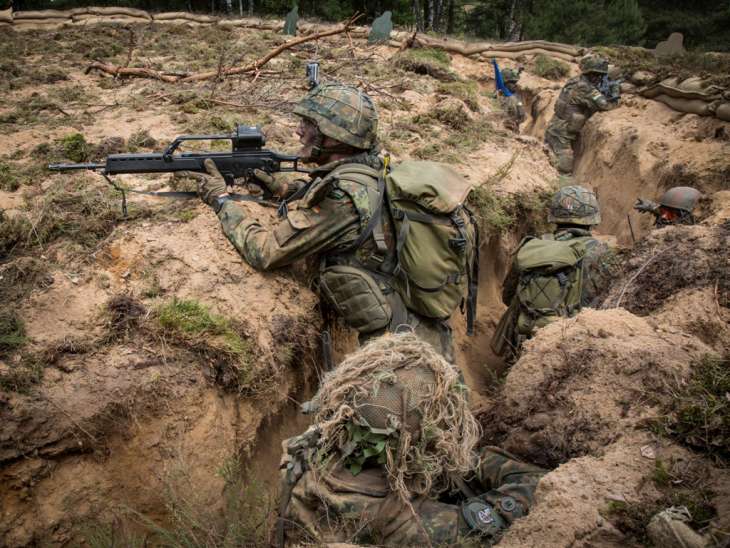
The first rifle-protective vest and further armor and LBE evolution in the airborne forces
The need for protection against small arms as seen during peacekeeping and intervention operations during the 1990s led to the adoption of some vests with the ability to take rifle-protective plates. The first of these was the Schutzweste Bristol Type 18, manufactured by the British company Meggitt Composites, essentially a large soft armor carrier with integrated pockets for rifle plates. It was adopted, in a snap procurement decision to accompany German troops deploying to the Balkans as part of SFOR to protect against 7.62 caliber sniper threats. As it was adopted off-the-shelf, the carrier is seen in the British DPM pattern. While a rushed procurement, the Bristol was seen in service up until the early 2000s, when it was used by some members of the ISAF contingent in Afghanistan.
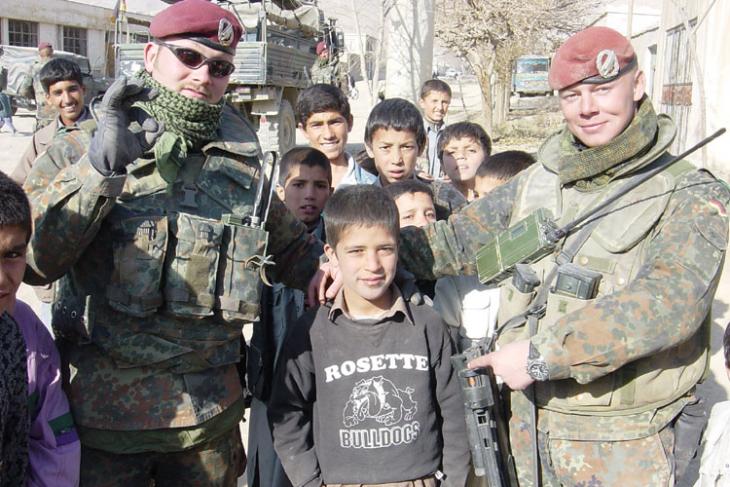
However, the Bristol was foreign made, not in the correct pattern, and lacked the proper pouches and setup for German equipment. The Bundeswehr procured a very similar vest in the mid to late 1990s in the Schutzweste Mehler ST, made by Mehler Vario. This vest used the same soft armor and hard armor inserts and general layout as the Bristol, but swapped the built-in pouches on the center for three G36 magazine pouches, and added attachment points for KTS 95 pouches on the side and shoulders. The weight was also reduced by 5 kilograms while also maintaining the same level of protection. These Mehler ST saw extensive use with deploying airborne forces throughout the 2000s and are still seeing some use in reserve and training units, but are generally considered uncomfortable and not well suited for infantry operations due to their bulk. Infamously, in full configuration the Mehler ST kit came with a groin protective flap which contained a hard protective plate, which would constantly beat up the user’s legs in use.
The later Mehler SK attempted to remedy some of these issues. The KTS 95 pouch attachment points were removed, and replaced with a general “wide” band attachment point and the general closure and soft armor layout of the vest was redesigned. The Mehler SK was commonly used as a “slick” vest for carrying soft armor and plates, on top of which additional load carriage equipment was placed. These vests proved to be much more popular than the earlier ST and Bristol vests, and continue to see extensive use up to today.
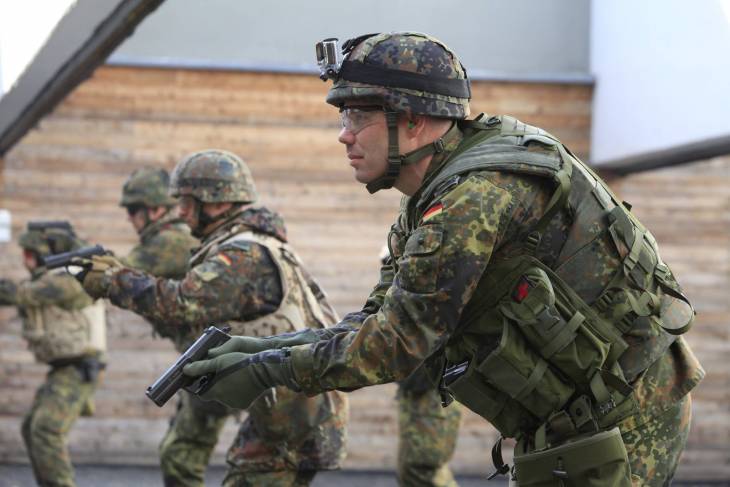
While generally the Mehler ST and Bristol vests were used standalone without vests due to their built-in pouches, airborne forces also often utilized chest rigs or other load-only systems over these vests. Of those, the “KSK Weste” is of particular note, being a limited-issue vest in the airborne forces. Though originally used by the elite KSK as the name suggests, the KSK Weste saw widespread use in the regular airborne forces beginning in the 2000s and continues to see use today. The KSK Weste is a “battle jacket” style system that spreads the weight over pouches on the front and side of a soldier, while maintaining an open front. It features built-in pouches, velcro press-studs, and a hidden KTS 95 attachment section to attach additional gear. KSK Weste are some of the most common “issued” systems to be seen worn over Mehler SKs, and are also often used standalone. The comfort the vest provides standalone is one of the reasons why it remains popular among airborne troops to this day.
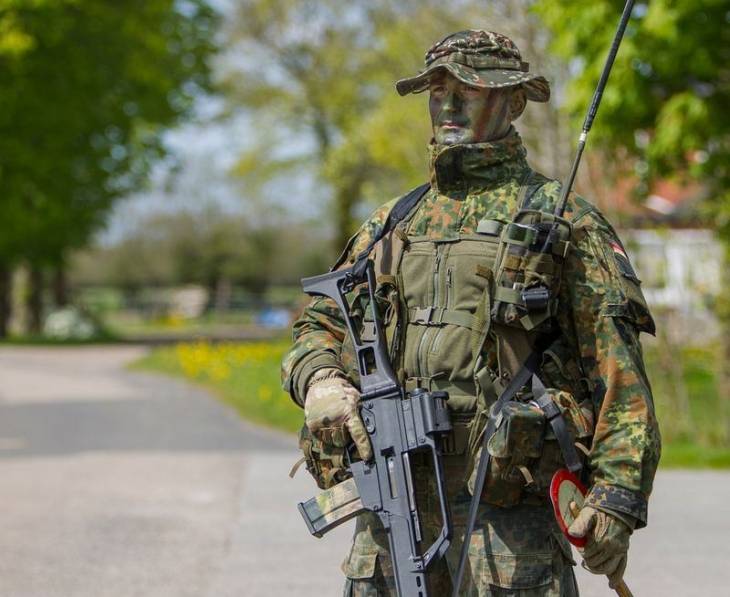
The IdZ System
While the Bristol to Mehler ST/SK evolution is fairly simple, those Mehler vests were primarily used by the airborne and airlanded units of the Bundeswehr. Simultaneous to the Mehler ST/SK vest evolution, Germany was running a “future soldier system” program known as Infanterist der Zukunft (IdZ) that had its own vests and LBE that aimed to replace the SpliSchu/KTS 95 combination. These pieces of kit, also produced by Mehler Vario, would see operational use from the mid-2000s onwards, but were not adopted as a “universal” vest across all branches of the Bundeswehr.
IdZ kit sets were primarily issued to Jäger or Panzergrenadier units equipped with Boxer and Puma, as these newer vehicles were expected to function with the battlefield networking components of the IdZ system. As Airborne forces were not meant to receive the full set of IdZ equipment, Airborne forces generally continued to use other vests and only sometimes used IdZ equipment on deployment. Other smaller combat support branches generally continued to use earlier gear until IdZ gear or other Mehler vests filtered down to them.
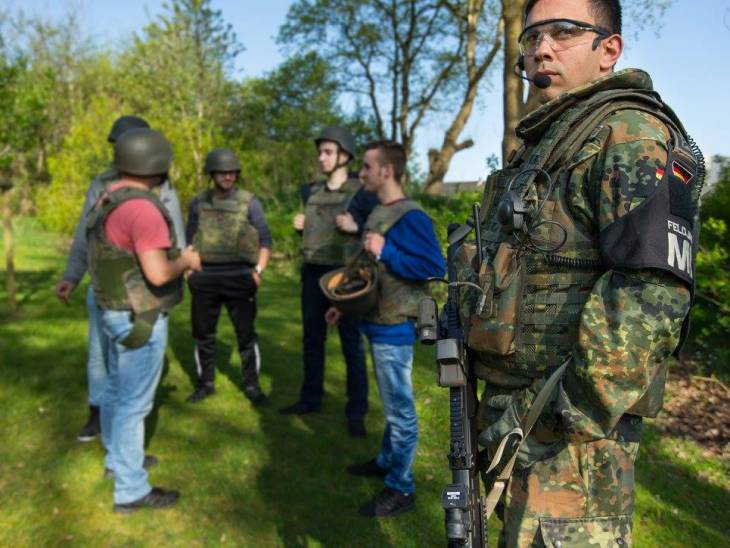
The first generation IdZ system’s armor and LBE set consisted of an armor carrier, called “IdZ Schutzweste”, a load carrying vest called “Überwurf-Kampfmittelweste” or just “IdZ Weste”, and pouches to attach to both. Both the IdZ Weste and IdZ Schutzweste use their own proprietary grid pouch attachment system (called MTS-Schlaufung) that wasn’t compatible with either KTS 95 or the international MOLLE/PALS standard. The first sets arrived at Jägerbataillon 292 in 2005. The IdZ Schutzweste is a fairly conventional soft armor/hard armor carrier, with quick release functionality. It saw fairly wide adoption; photos of its use can be seen across most infantry units and protection units. But airborne forces largely stuck to their own Mehler vests, and insufficient numbers were procured due to the attachment of the vest to the full IdZ system.
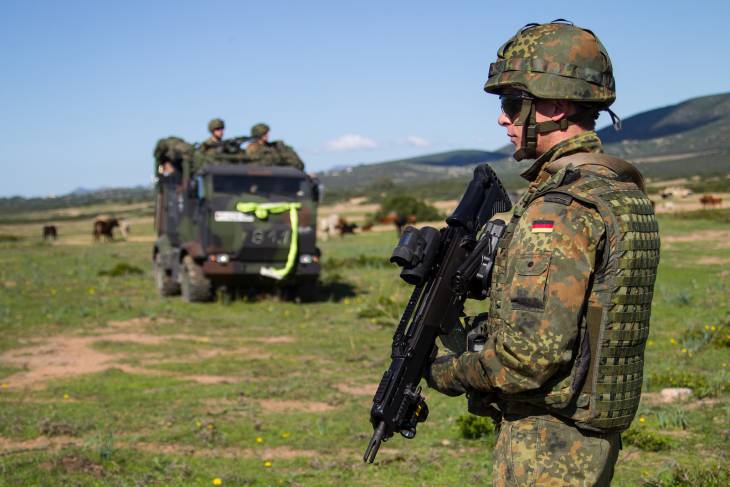
The second generation of the IdZ system produced a new generation of armor and LBE. The large load carrying vest was ditched in favor of a small chestrig which could be clipped onto the armor vest, and a new armor vest procured under the name “IdZ-ES Schutzweste”. A battle belt with optional ballistic insert and a plastic “spine” that could attach it to the vest was also included in the set. As with the first generation IdZ, pouches were provided with the set. The new vest used the international standard MOLLE/PALS attachment system and was more compact than the first generation, and added compatibility with the clip-on chestrig and attachments for a spine which attached it to a battle belt for load bearing. A combat computer backpack was also issued with IdZ-ES, though this was often removed in practice. The IdZ-ES set would later evolve into a set called “Schutzweste, Infanterie, modifiziert”, which eliminated the computer backpack as part of the standard set and revised the closure and quick release mechanism. Both IdZ-ES and Schutzweste, Infanterie, modifiziert appear to be widely issued to frontline infantry Jäger or Panzergrenadier units and are the closest thing to “standard” body armor in the Bundeswehr today, even equipping airborne units during some deployments. In practice, the clip-on chest rig does not appear to see much use with both systems, soldiers prefer to directly mount pouches onto the MOLLE of the vest.
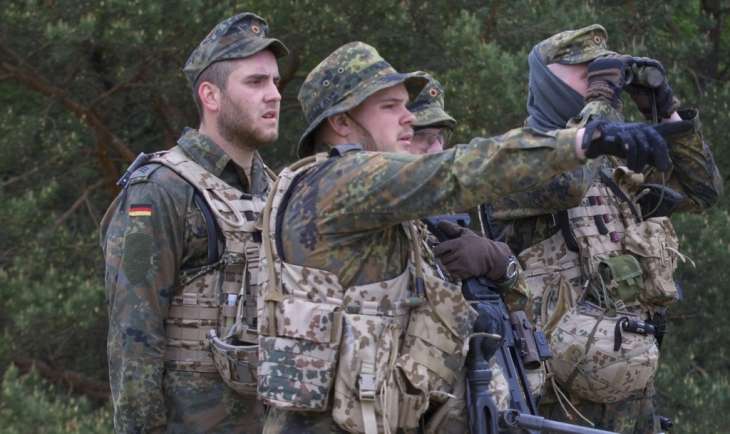
Other Foreign Armor Systems
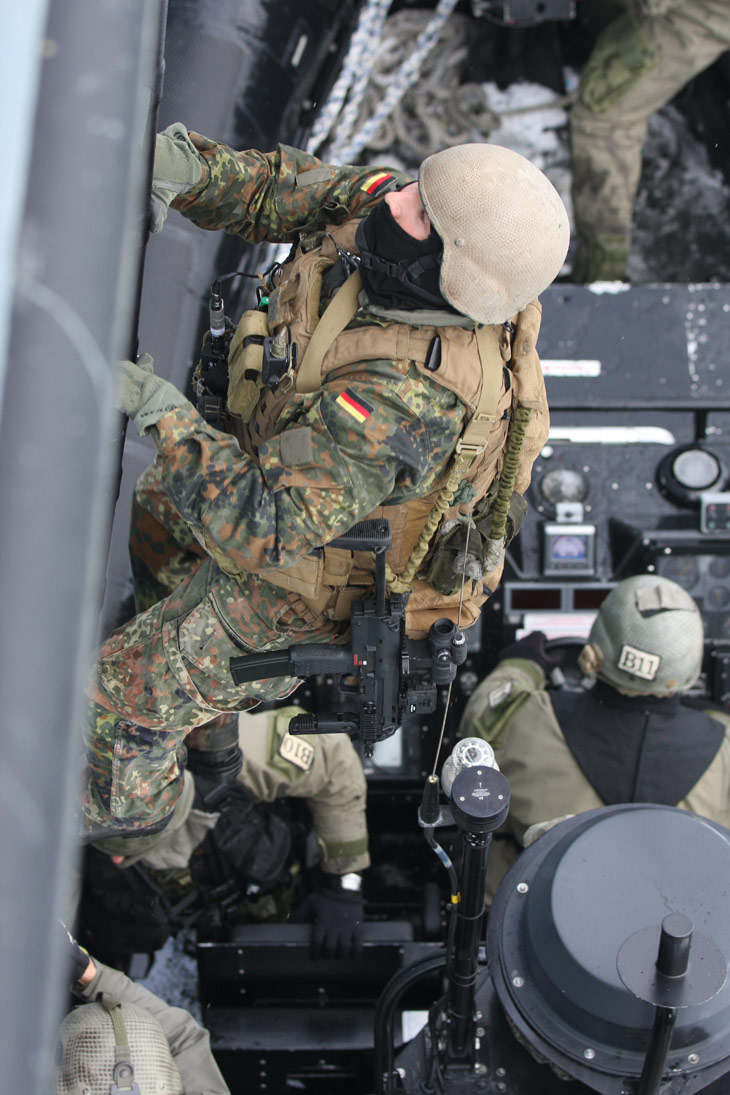
However, both the Mehler and IdZ armor systems are heavily augmented by other foreign armor systems. The Eagle Industries MARCIRAS is very popular among German Navy units, although it also sees use with the land-based units as well such as the KSK and Jägerbataillon 291. Eagle Industries MBAVs have also been spotted in airborne units. MARCIRAS and MBAV systems feature different soft armor cuts compared to IdZ and Mehler ST/SK vests, so their usage represents another separate line of armor procurement in the Bundeswehr.
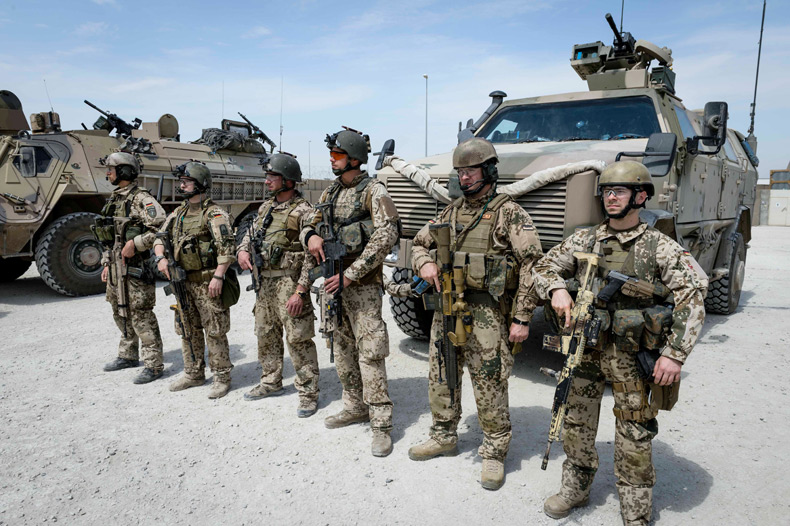
Plate Carriers
Almost all systems discussed before are combined soft and hard armor vests, which have provisions to carry large soft armor components for protection against fragments and weaker bullets. However, this large soft armor coverage comes at a cost. Soft armor doesn’t breathe well, and the vest needed to carry both types of armor generally ends up being fairly bulky. The plate carrier, a vest that simply carries a hard armor plate became a widespread alternative to combined vests in the 2000s. The lighter weight and bulk of plate carriers proved popular to soldiers conducting long patrols in Afghanistan, however, their reduction in soft armor coverage has lead some to wonder if they are truly suitable for general purpose military use.
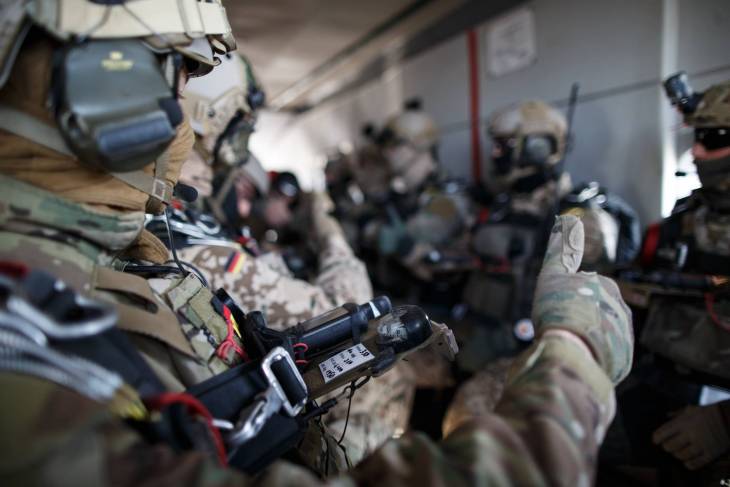
While the Bundeswehr has not officially adopted any plate carrier for military-wide service, plate carriers are fairly common among deploying forces and elite units. Crye JPC and Lidnerhof Taktik plate carriers appear to be issued equipment to soldiers in the elite KSK and EGB units. However, private purchase plate carriers appear fairly common in almost all units during exercises, and Bundeswehr soldiers interviewed for this article indicated that this practice is commonplace.
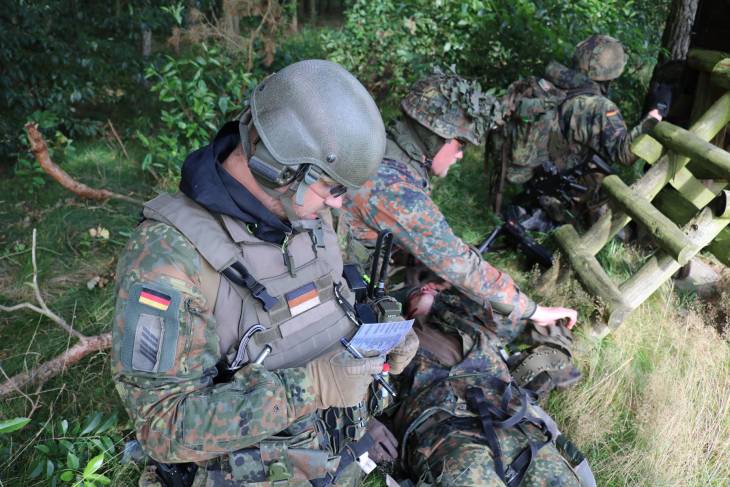
MOBAST: The Very Close Future
Around 2015, the Bundeswehr recognized the potential logistical issues in the plethora of armor and LBE types and launched the MOBAST program to replace all of them with a system of vest and protective equipment. As MOBAST aims to replace all armor and LBE going all the way back to KTS 95, it needs to fulfill a wide variety of requirements that lead to the procurement of so many systems in the first place.
Trials for MOBAST took place in 2018, and following some delays, the first sets are set to be delivered in a few months. Around 16,000 sets are to be delivered by the end of 2021, and the existing schedule has production continuing with 46,000 sets will be delivered by 2026.
The MOBAST program appears to have learned a lot from its predecessors. Unlike IdZ, which was a complete soldier equipment suite which included battlefield networking and other equipment, MOBAST simply deals with armor and a vest. The actual equipment in a set is also reduced compared to IdZ. A MOBAST set simply consists of the combined soft/hard armor vest, a set of ballistic underwear, and the pouches for the vest. No battlebelt, additional vest, or chest rig will be provided with the MOBAST set, perhaps in recognition that soldiers will buy their own if needed.
The MOBAST Vest is produced by Mehler Vario and is fairly conventional and matches the protection provided by earlier generation vests: SK1; protection against 9×19mm soft core roinds with the soft armor, and SK4; protection against 7.62×51mm ball rounds with the hard armor. Additional SK1 add-ons for the neck and groin are optional. The vest notably retains the ability to attach a “spine” to transfer some weight onto an optional battle belt, similar to IdZ.
A similar spine system was provided with the British Virtus body armor system, but saw low soldier utilization, so MOBAST making it optional is a frugal decision by the Bundeswehr. The vest also appears to have mounting hardware for clip-on chest rigs, perhaps for easy compatibility with unit or private purchase chest rigs or placards.

The MOBAST ballistic underwear is perhaps the most revolutionary part of the system. Meant to be worn under regular combat uniforms, the ballistic underwear provides protection against low energy shrapnel such as gravel and similar particulates kicked up by explosions that would normally pierce the skin. If it proves comfortable and is worn regularly in the field, it may significantly increase the “coverage” of soft armor on the average soldier, albeit at a lower class. MOBAST ballistic underwear may also prove useful to units that currently use plate carriers, allowing them to gain additional protection with minimal added bulk.
Finally, the MOBAST pouches are being produced by two firms which are known for making popular private purchase gear, Lidnerhof Taktik and Tasmanian Tiger. The rifle magazine pouches by Tasmanian Tiger are said to be adjustable for multiple different magazines used by different Bundeswehr rifles, so the pouch set should be simplified relative to earlier sets since there would be no need for multiple rifle magazine pouches, some of which may go unutilized.
The IdZ battlefield network systems also will be integrated into MOBAST. Technological improvements have resulted in smaller computers being used for these systems, so the need for a full “backpack” computer is gone. Rather the latest generation of IdZ electronics, officially called “IdZ-ES K-Stand VJTF 2023”, is integrated into a series of small attachments across the MOBAST vest. These serve the purpose ATAK and similar battlefield computers serve in other militaries, with further integration with supporting vehicles and the German command structure.
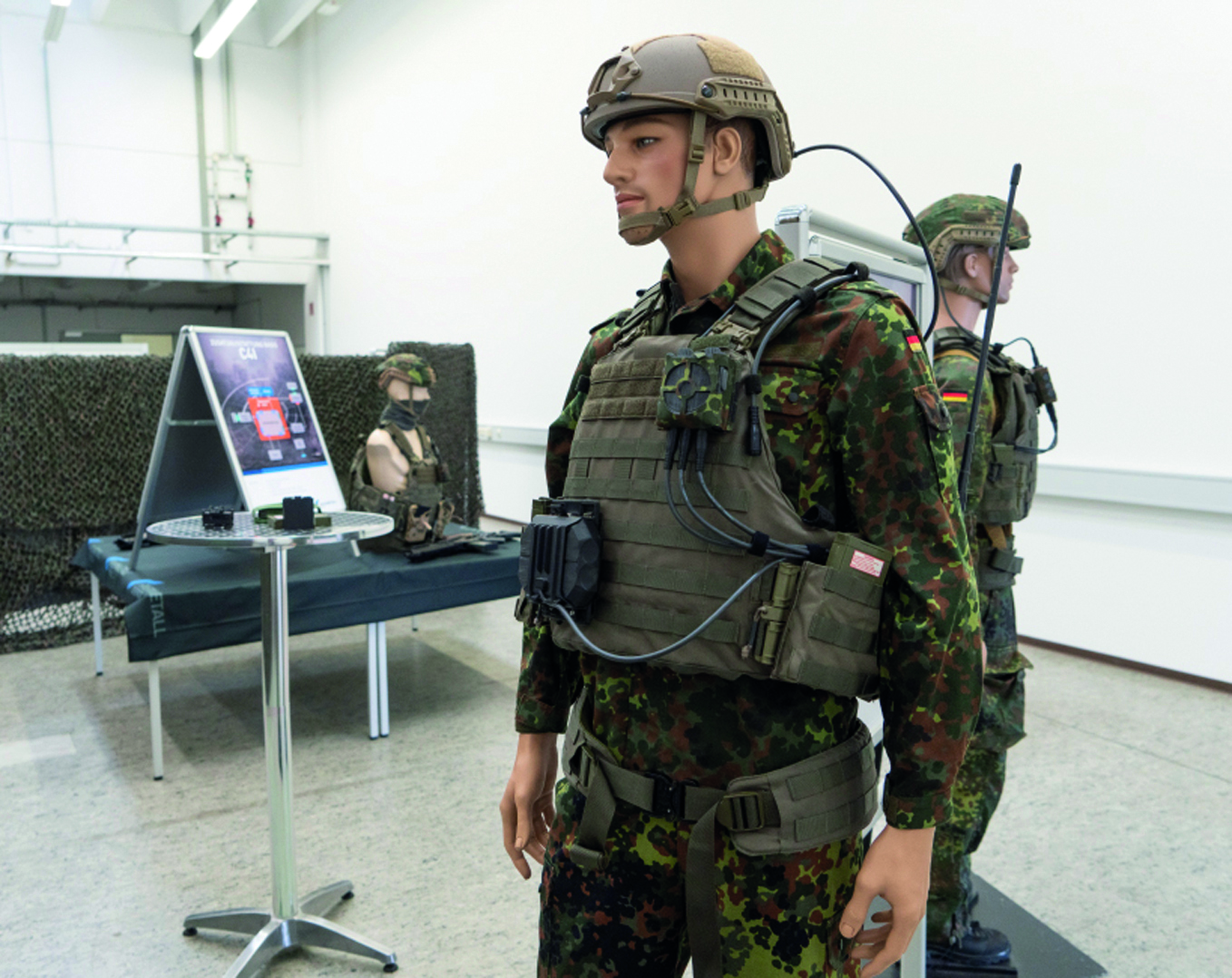
Overall, MOBAST appears to be a solid vest system that could very well succeed in replacing all prior generations of armor and LBE in the Bundeswehr. Elite units may stick with plate carriers due to their need to move fast and user preference, but even they may benefit from the ballistic underwear procured under MOBAST, which can give them additional protection under their plate carriers.

